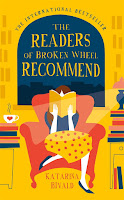Tasmanian children's author, Lian Tanner reflects on how a series is born and the sparks that can spur a story into life.
 One of the questions I am often asked
in schools is where the idea for a book came from. It’s not always an easy
question to answer, and Fetcher’s Song (#3
in the Hidden series) is one of the hardest to explain – mainly because it grew
out of an odd sentence that was floating in my head when I woke up one morning.
One of the questions I am often asked
in schools is where the idea for a book came from. It’s not always an easy
question to answer, and Fetcher’s Song (#3
in the Hidden series) is one of the hardest to explain – mainly because it grew
out of an odd sentence that was floating in my head when I woke up one morning.
‘It was New Year’s Eve, and the last of the fortune-telling ducks was
dead.’
Was it the tail end of a dream?
A suppressed longing for waterfowl? Or just a fragment of nonsense from my unconscious
mind? I have no idea, but I wrote it down, just in case, in the notebook I keep
beside my bed.
In the last six years I’ve
written two complete fantasy trilogies, and one of the most important things
I’ve learned is that each series comes with its own problems. The greatest problem
I faced with The Hidden series was that it wasn’t originally meant to be a series. When I wrote the first book, Ice Breaker, I had in mind a stand-alone novel, and it wasn’t until
some time after I’d completed the manuscript and handed it in that I realised I
wanted to write more about twelve-year-old Petrel and her world.
 That’s when it became a series –
with the built-in challenge that I didn’t yet have an overarching idea for the
three books. However I realised fairly quickly that I wanted to follow the
fortunes of three different children, all of them hiding from the fanatical Anti-Machinists
who had taken over the world; all of them bent on protecting a particular type
of knowledge.
That’s when it became a series –
with the built-in challenge that I didn’t yet have an overarching idea for the
three books. However I realised fairly quickly that I wanted to follow the
fortunes of three different children, all of them hiding from the fanatical Anti-Machinists
who had taken over the world; all of them bent on protecting a particular type
of knowledge.
It seemed to me that most people,
if they saw a new Dark Age approaching, would want to save scientific and
medical knowledge. That covered the first two books, Ice Breaker and Sunker’s Deep,
and the first two children, Petrel and Sharkey. But what about the third child?
Who was she, and what on earth was she trying to save?
That’s where the odd sentence
came in.
‘Fortune-telling ducks’ sounded
to me like a small travelling circus, or a group of entertainers. Once I
started developing the idea, the ducks didn’t last long, but the entertainers
remained – mainly because one of the things that real-life fanatics like the
Taliban and Pol Pot seem to loathe is any sort of frivolity or enjoyment.
So, in my imaginary world, the
Anti-Machinists had outlawed songs and stories. And Gwin Fetcher and her family,
a small group of travelling players, were trying to keep those things alive.
As Professor Serran Coe says, at
the very beginning of Fetcher’s Song,
‘There is history – true history, not the
curdled sort the Anti-Machinists want us to teach – and there is science and medicine
and the making of machines. But there is another sort of knowledge too, just as
valuable. Lin Lin and I are trying to save the mind of the world. You will save
its heart.’
Like the first two books in the
series, Fetcher’s Song is about
friendship, the messiness of life, and those difficult moments when you have to
step out of the shadows and stand up for what you believe.
But more than any of those
things, it’s about songs and stories, and how important they are to us.
Particularly in hard times.
Lian Tanner
Children's author
Website: http://liantanner.com
Children's author
Website: http://liantanner.com
Facebeook: https://www.facebook.com/LianTannerAuthor
Instagram: https://www.instagram.com/liantanner/







